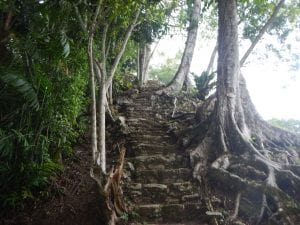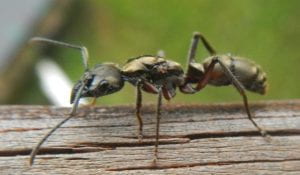Today was chalk-full of adventure, history, and changes. We woke up early at TEC and made three field-ID’s before breakfast! First, I spotted a Shimmering Golden Sugar Ant (Camponotus sericiventris) and I told everyone that would listen to me about golden ant butts. Then, I let McKenna borrow my binoculars and she identified both a Great Kiskadee and a Social Flycatcher flitting about high up in a pine tree. Lastly, on our way into breakfast at the dining hall, we spotted an agouti (which promptly ran away from us).
We left TEC after breakfast and were on our way to Caracol Archaeological Reserve and then to Chiquibul National Forest.
Caracol was absolutely stunning. I have never visited any ancient ruins, and it was incredible to learn about the Mayan civilization and culture. The site of Caracol is vastly underappreciated and under-documented. Archaeologists have excavated several huge temples and astronomical buildings, but the entire complex is a seven mile radius with more than 35,000 individual structures (at its peak). I think the most fascinating building at the site was the ‘E-group’ astronomical building, whose three peaks align with the position of the rising sun at three key points throughout the year! As I climbed up the opposite building to see what the ancient Mayan astronomers did, it started to pour down rain (our first taste of Belize’s wet season), which made the uneven mossy steps even slipperier.

We saw some very large leafcutter ant (Atta cephalotes) colonies (more than a meter in diameter) and also a very small one! Dr. Solomon said that the small one was probably a year or two old, because it only had two entrance holes to the nest. I also saw a very large ant with mottled/spotted coloration that I didn’t recognize. I asked Dr. Solomon and he theorized that it could be a Ponerine or Hyperponerine ant.

